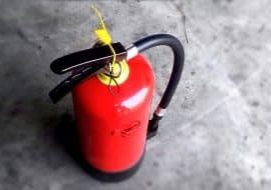Fire Compartmentation
Share
Understanding Fire Compartmentation
Fire compartmentation and fire safety are a critical consideration in any building. Fire compartmentation plays a vital role in containing and preventing the spread of fire.
Whether you are a landlord, resident/tenant, employee or business owner, the concepts of fire compartmentation and fire safety are crucial to understand. At Element PFP, we are committed to providing comprehensive fire protection solutions. This includes providing you with the knowledge and effective fire compartmentation strategies that could one day save somebody’s life.
What is Fire Compartmentation?
Fire compartmentation is essentially, the dividing of a building into separate compartments or zones. This will be achieved through the use of fire-resisting walls, floors, and doors. Each compartment acts as a barrier, designed to contain fire and smoke within one zone. Thus, preventing its spread further throughout the building.
The objective of this is to delay the progress of any potential fires, therefore, allowing any occupants the time to evacuate safely. Additionally, it can help prevent the spread of fires from causing devastation to local buildings. Not to mention providing firefighters time and access to tackle the fire more effectively.

How Does Fire Compartmentation Provide Passive Fire Protection?
Passive fire protection measures, such as fire compartmentation, aim to slow down the spread of fire and smoke without relying on active firefighting systems. Different ways that fire compartmentation works include:
Fire-Resisting Construction:
Effective fire compartmentation utilises fire-resistant materials, such as fire-rated walls, floors, and doors, to create barriers that can withstand the effects of fire for a specified period. These materials are designed to prevent the movement of flames, smoke, and toxic gases. Purposely limiting their ability to spread to other areas of your building.
Compartmented Building Integrity:
Fire compartments are built to maintain their structural integrity under fire conditions. This integrity prevents fire from spreading rapidly and helps contain the fire within the compartment of origin. This not only reduces the spread of fire throughout the building but also reduces the risk of it moving into other surrounding buildings.
Protected Means of Escape:
Fire compartmentation also ensures that escape routes, such as stairways and corridors, remain protected. By confining the fire to its point of origin, occupants can evacuate safely through designated escape routes, minimizing the risk of smoke inhalation and providing clear pathways for emergency responders.

Why is Fire Compartmentation Important?
Fire compartmentation is of paramount importance for several reasons:
Protecting Lives:
Fire compartmentation provides occupants with the crucial time they need to evacuate the building safely. By containing the fire within specific areas, it reduces the spread of heat, smoke, and toxic gases, allowing occupants to find refuge in fire-free zones or reach designated safe exits.
Bolstering Firefighter Safety:
Fire compartmentation not only protects occupants but also enhances the safety of firefighters. By confining the fire to its initial compartment, firefighters can better control and extinguish the fire. Consequently, reducing the risk of it spreading uncontrollably throughout the building.
Property Protection:
Effective fire compartmentation limits fire and smoke damage to specific compartments, minimising the impact on the overall structure and contents of the building. This containment helps prevent the rapid spread of fire, reducing financial losses and facilitating a faster recovery process.
Legal Compliance:
Another crucial reason to have fire compartmentation in your building is to ensure that you comply with the law! Full compliance with building regulations and fire safety standards is a requirement by law. Failure to implement proper fire compartmentation measures can result in legal consequences and compromises the safety of occupants. These can include, but are not limited to:
- Prohibition notices – These notices prohibit the use of all or part of your building until the identified fire safety issues are rectified.
- Prosecution and/or Fines – If found guilty, the responsible individuals or entities may face fines, which can be substantial, depending on the severity of the breaches.
- Imprisonment – In cases where serious breaches of fire safety regulations have resulted in fatalities or significant risk to life, individuals responsible for the building may face imprisonment if they are found guilty.
- Civil Liability – If a fire occurs due to inadequate fire compartmentation, and it causes injury or damage to individuals or neighbouring properties, the building owner or operator may face civil liability claims for compensation.
It isn’t, however, all doom and gloom. Here at Element PFP, we understand the critical role that fire compartmentation plays and are here to support you with all your compartmentalisation needs!

Utilise Element PFP for Your Expert Fire Compartmentation Solutions
Our team of experienced professionals specialises in designing and implementing effective fire compartmentation strategies tailored to meet the specific needs of your building. We prioritise compliance with building regulations and industry standards, ensuring that our fire compartmentation solutions provide reliable and code-compliant fire protection.
By partnering with Element PFP, you can have confidence in our expertise, meticulous attention to detail, and commitment to delivering exceptional results. Our friendly team will guide you through the entire process, from assessment and design to installation and ongoing maintenance, ensuring that your fire compartmentation system remains effective and up to code.
Contact us today to discuss your fire safety needs and take the first step toward a safer and more secure building.








